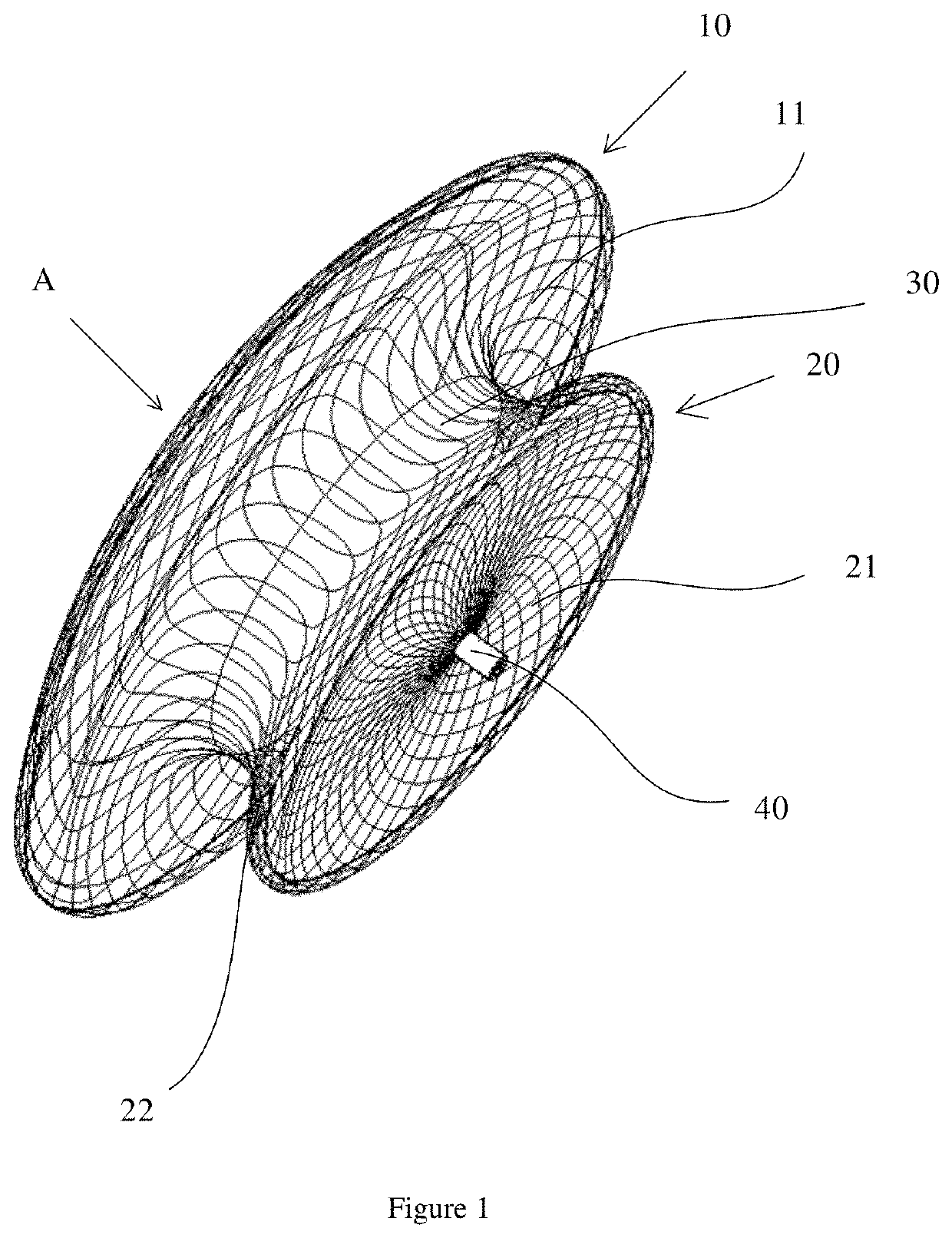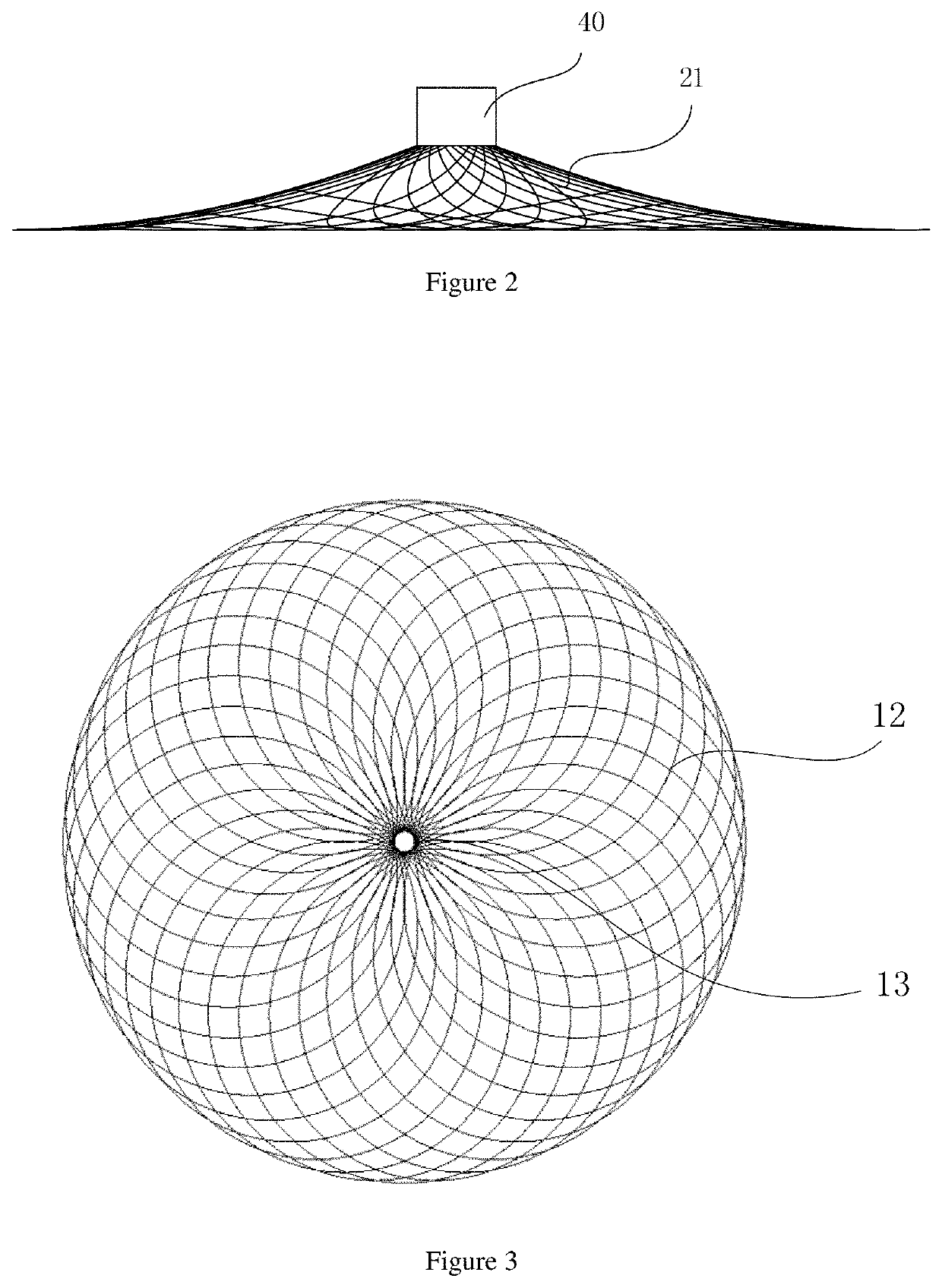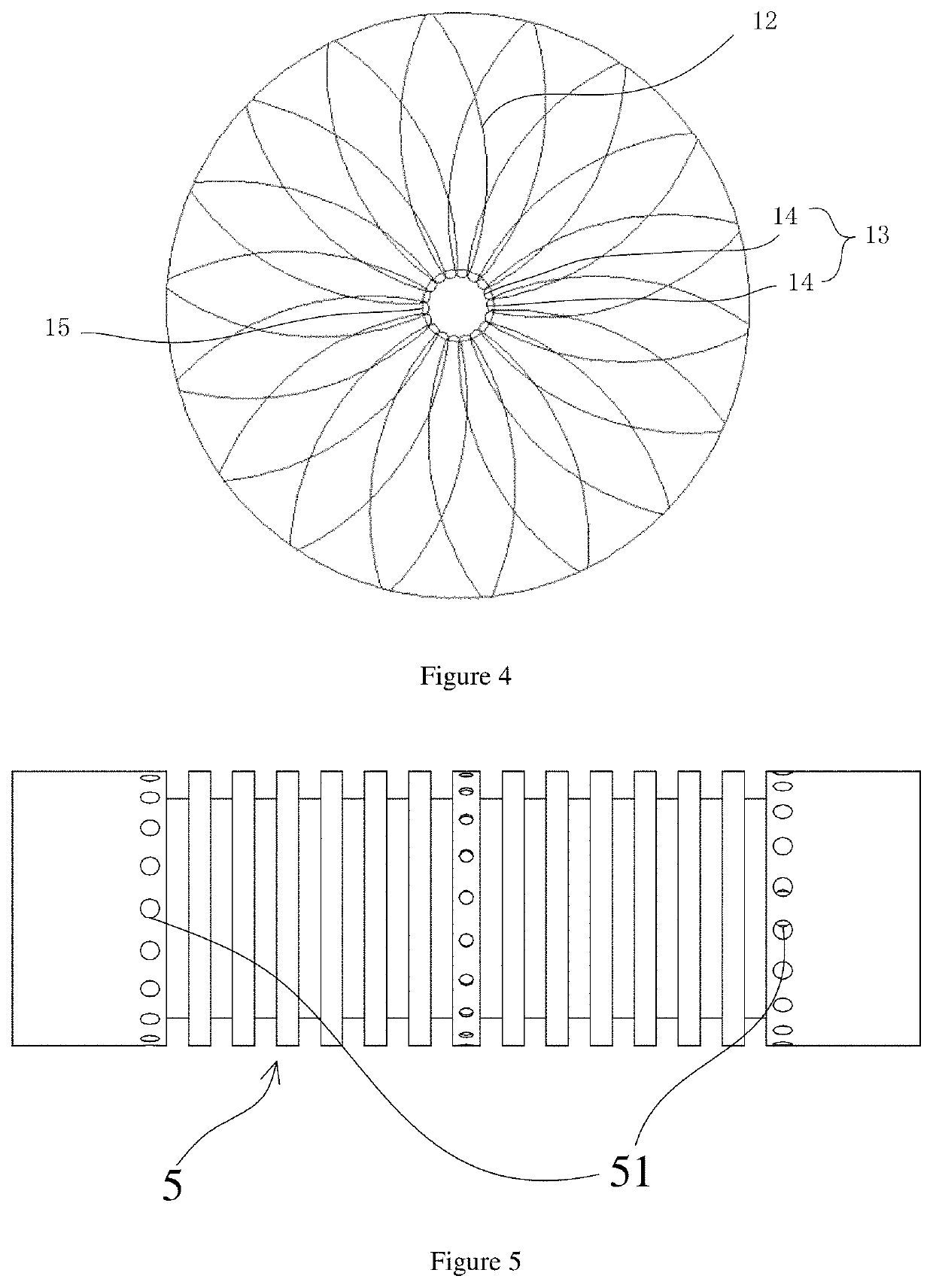Degradable occluder
a technology of occluder and occluder, which is applied in the field of occluder, can solve the problems of postoperative scars, coagulation, and high surgery cost, and achieve the effects of stable connector dimension, easy operation, and easy fall o
- Summary
- Abstract
- Description
- Claims
- Application Information
AI Technical Summary
Benefits of technology
Problems solved by technology
Method used
Image
Examples
embodiment 1
[0078]As shown in FIG. 1, FIG. 2, FIG. 3 and FIG. 4, a degradable cardiac atrial septal defect occluder includes a first disc-shaped mesh 10, a tubular mesh 30, and a second disc-shaped mesh 20 which are sequentially connected. The first disc-shaped mesh 10 and the second disc-shaped mesh 20 are double-layer mesh covers. The two ends of the tubular mesh 30 are connected to the inner mesh surface 11 of the first disc-shaped mesh 10 and the outer mesh surface 22 of the second disc-shaped mesh 20 respectively. The first disc-shaped mesh 10, the tubular mesh 30, and the second disc-shaped mesh 20 are integrally formed. The center portion of the inner mesh surface 21 of the second disc-shaped mesh 20 is provided with a connector 40 that closes the mesh surface. The inner mesh surface 21 of the second disc-shaped mesh 20 is connected with the connector 40 by hot melt welding. The outer mesh surface 12 of the first disc-shaped mesh 10 includes a closing end 13, the closing end 13 is a plur...
embodiment 2
[0101]As shown in FIG. 8, FIG. 9, FIG. 10 and FIG. 11, a degradable heart patent ductus arteriosus occluder comprises a first disc-shaped mesh 10, a tubular mesh 30 and a second disc-shaped mesh 20 which are sequentially connected. The first disc-shaped mesh 10 is a double-layer mesh cover and the second disc-shaped mesh 20 is a single-layer mesh cover. Both ends of the tubular mesh 30 are respectively connected to the internal mesh surface 11 of the first disc-shaped mesh 10 and the second disc-shaped mesh 20. The first disc-shaped mesh 10, the tubular mesh 30 and the second disc-shaped mesh 20 are integrally formed. The center of the second disc-shaped mesh 20 is provided with a connector 40 that closes the mesh surface. The connection between the second disc-shaped mesh 20 and the connector 40 is a hot-melt welding connection. The outer mesh surface 12 of the first disc-shaped mesh 10 includes a closing end 13 wherein the closing end 13 is a plurality of sequentially adjacent rin...
embodiment 3
[0106]As shown in FIG. 12, FIG. 13, FIG. 14 and FIG. 15, a degradable cardiac ventricular septal defect occluder includes a first disc-shaped mesh 10, a tubular mesh 30, and a second disc-shaped mesh 20 which are sequentially connected. The first disc-shaped mesh 10 and the second disc-shaped mesh 20 are double-layer mesh covers. The two ends of the tubular mesh 30 are connected to the inner mesh surface 11 of the first disc-shaped mesh 10 and the outer mesh surface 22 of the second disc-shaped mesh 20 respectively. The first disc-shaped mesh 10, the tubular mesh 30, and the second disc-shaped mesh 20 are integrally formed. The center portion of the inner mesh surface 21 of the second disc-shaped mesh 20 is provided with a connector 40 that closes the mesh surface. The inner mesh surface 21 of the second disc-shaped mesh 20 is connected with the connector 40 by hot melt welding. The outer mesh surface 12 of the first disc-shaped mesh 10 includes a closing end 13 wherein the closing ...
PUM
| Property | Measurement | Unit |
|---|---|---|
| outer diameter | aaaaa | aaaaa |
| outer diameter | aaaaa | aaaaa |
| temperature | aaaaa | aaaaa |
Abstract
Description
Claims
Application Information
 Login to View More
Login to View More - R&D
- Intellectual Property
- Life Sciences
- Materials
- Tech Scout
- Unparalleled Data Quality
- Higher Quality Content
- 60% Fewer Hallucinations
Browse by: Latest US Patents, China's latest patents, Technical Efficacy Thesaurus, Application Domain, Technology Topic, Popular Technical Reports.
© 2025 PatSnap. All rights reserved.Legal|Privacy policy|Modern Slavery Act Transparency Statement|Sitemap|About US| Contact US: help@patsnap.com



